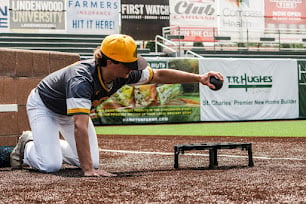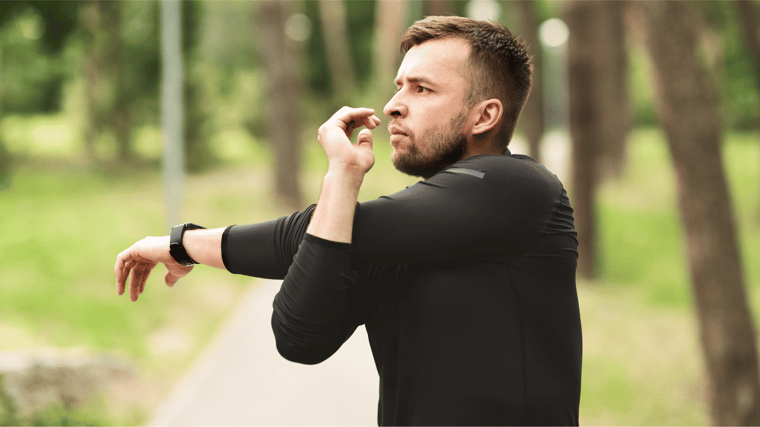No Products in the Cart


It's tempting, isn't it?
After an intense day of throwing, you may feel inclined to skip your post-throw exercises and give your arm a break. However by doing this, you’re missing out on a pivotal opportunity. By pushing your muscles a little further with post-throw exercises, you're not just recovering; you're fortifying your arm for even greater strength and resilience.
Opting out of this routine might feel like a short-lived relief, but in doing so, you might be sidelining some significant gains.
At Premier Pitching Performance, our mission has always been clear: To develop elite pitchers who not only deliver exceptional performance on the mound but also prioritize their training and recovery. One of the most overlooked, yet crucial elements of a baseball player’s training regimen is their post-throw routine.
Today, we're diving deep into the exercises and techniques that you can do after intense throwing sessions to accelerate your muscle recovery and ultimately, increase your velocity.
>> Get a MOCAP Assessment and Customized PPP Training Program
Most players understand the significance of arm recovery. Since a huge factor in velocity development is your ability to put forth your best effort regularly, it’s important to minimize bad training days.
Essentially, any player that is not recovering properly can not consistently train at a high level.
When thinking about recovery techniques, most people talk about “arm care”. However, many players mistake arm care for rest days or just a couple exercises during active recovery. Brett Graves, former pitcher and co-owner of Premier Performance Pitching, commented on PPP’s perspective about arm care:
“Most people attribute arm care to rotator cuff exercises and don't understand all the areas that go into managing a players arm health: workload management, strength plans, mobility and correctives, as well as, post-throw mobility and strengthening exercises.”
At PPP, coaches recommend players develop a post-throw routine to help them make more significant gains during recovery. By further breaking down and fatiguing the arm muscles, you can rebuild stronger.
The benefit of post-throw exercises is two-fold, Brett explains. Since the arm is already tired after a heavy throwing day, you can make more impact on muscle development. The post-throw period is also an ideal time to do light mobility and small muscle strengthening, because the next day you can focus on completely recovering.
Contrary to belief, a post-throw routine does not necessarily reduce soreness the next day, but it will make you stronger.
Many people in the baseball industry, Brett described, have a misconception about how recovery works. Recovery should be systematically built into your programming with specific workload management protocols in mind.
In order to help you develop your arm strength and improve your velocity, we asked Brett about the keys of good post-throw routine:
“A good routine would include post throw mobility and post throw strengthening exercises, along with supportive strength and conditioning plans, nutrition and hydration along with adequate sleep. The bare minimum is typically a prescribed strengthening circuit for post-throw, and mobility gets overlooked.”
Here are a few specific exercises to keep in mind when thinking about your post-throw workout:

Plyo balls and rebounder training post-throw will engage your dynamic stabilizing muscles, enhancing your arm recovery and resilience.
Partner Deceleration Toss: In a split stance with your throwing knee on the ground, have a partner toss a plyo ball out in front of the pitcher's face. The pitcher should catch the ball and decelerate their arm and perform a return toss to their partner in a reverse throw fashion. Perform this drill with one of our 2lb or 16oz Plyo balls
Rebounder Force Acceptance: From a standing position, throw the plyo ball at the rebounder with moderate force and catch it with a straight arm using the same hand you throw with. The focus in this drill is on the catch, not the throw. Perform this drill with one of our 2lb or 16oz Plyo balls.
Rebounder Rapid Response I,Y,T: From raised supine position, perform rapid response throws into the mini rebounder in a I, Y and T formation. Perform this drill with one of our 2lb or 16 oz Plyo balls.
Resistance bands are a pitcher's best friend. They offer variable resistance that helps improve strength, especially in the smaller stabilizing muscles of the shoulder. Exercises such as external rotations, T’s, Y’s, W’s, band pull-aparts, and face pulls are particularly beneficial for building shoulder stability and balance.
The forearm and wrist are paramount in pitch grip and delivery. Incorporate exercises like wrist curls, reverse wrist curls, pronation/supination exercises, finger extensions (using a rubber band around the fingers) and wrist flexor stretches to enhance strength and flexibility in these areas.
For muscle recovery and mobility, the use of foam rollers or lacrosse balls is invaluable. They aid in alleviating knots or tight spots in muscles. Besides focusing on the latissimus dorsi, triceps and deltoids, consider giving attention to the pectoral muscles and the subscapularis. Regularly working on these areas can reduce muscle tightness and prevent adhesions that limit range of motion.

Engaging in the correct mobility regimen after a bout of intensive throwing can mean the difference between swift recovery and lingering tightness or even injury. It's not just about the act of stretching; it's about understanding why you stretch and ensuring you’re doing it right. Mobility exercises not only make us more mobile, it can also prevent issues that arise from muscle imbalance and improve our recovery time. There are two different types of stretches that we focus on with our PPP athletes: static stretching and dynamic stretching.
These are designed to hold a specific position for a set period, allowing muscles to relax and lengthen.
Cross-Body Shoulder Stretch: Ideal for the posterior deltoids. Reach one arm across your body and use your other arm to gently press it towards your chest.
Triceps Stretch: Raise one arm overhead, bend it at the elbow, and use the other hand to gently push the elbow, stretching the triceps and latissimus dorsi.
Pectoral Stretch: Stand in a doorway, place your forearm against the door frame, elbow at a 90-degree angle. Step forward with one foot and lean forward slightly until a stretch is felt in the chest and front of the shoulder.
These involve movement and help to prepare muscles and joints for activity, improving functional flexibility.
Arm Circles: Start with small circles and progressively make them larger. This warms up the shoulder joint and stretches the surrounding muscles dynamically.
Wrist Flicks: Extend arms straight in front and quickly flick your wrists up and down, warming up the forearm muscles and wrist joint.
Leg Swings: Hold onto something for balance and swing one leg forward and backward in a controlled manner. This prepares the lower body, especially hip flexors and hamstrings, for the demands of pitching.
>> FREE Download: 16 Week Performance Offseason Program
Rebounder Force Acceptance: From a standing position, throw the plyo ball at the rebounder with moderate force and catch it with a straight arm using the same hand you throw with. The focus in this drill is on the catch, not the throw. Perform this drill with one of our 2lb or 16oz plyo balls.
Partner deceleration toss: In a split stance with your throwing knee on the ground, have a partner toss a plyoball out in front of the pitcher's face. The pitcher should catch the ball and decelerate their arm, and perform a return toss to their partner in a reverse throw fashion. Perform this drill with one of our 2lb or 16oz Plyo balls
90/90 Pec Stretch (30 seconds per arm): In a split stance, brace your arm on the corner of a wall or door frame and stretch the pec in a throwing position.
Crab Walk position holds (30 seconds): Hold an extended crab walk position for 30+ seconds
Standing D2 Flexion (30 seconds): Standing shoulder width apart, hold/attach a band to your throwing hand. Take your throwing hand from your opposite hip to a D2 flexion position (high overhead, behind the ear. In a Y position). Perform 3 sets of 10+ reps.
Band Pull-Aparts (30 seconds): Hold the band with both hands extended in front of you. Pull the band apart by moving your hands outward and squeezing your shoulder blades together.
Remember, the key to this routine is consistency and ensuring that each movement is done with proper form. It may be beneficial to perform the routine more than once after particularly intense throwing sessions.
While it’s normal to have soreness after a heavy throwing day, Brett explained that some soreness is NOT normal.
“I was always taught that bad soreness is an acute soreness closer to your joints and good soreness typically is in the muscle bellies of your lat, bicep or pec. If you feel you pushed yourself too far you are always better playing it safe than sorry.”
When dealing with any type of small muscle injury, it’s important not to overdo it and make it worse. Seek medical advice ASAP if you have any concerns.
In other words, don’t turn a 2-week problem into a 2 month problem.
Instead of complete rest after intense training sessions, engage in low-intensity activities that don’t involve your arm, like cycling or swimming. These activities help to increase blood flow to your muscles, facilitating faster recovery.
Muscle recovery is not just about exercises; it's also about fueling your body right. Stay hydrated and ensure a balanced intake of proteins, carbs, and fats after a heavy session.
Remember, every pitcher is unique. It's essential to find a post-throw routine that suits your individual needs. At Premier Pitching Performance, we customize each training program based on our motion capture (MOCAP) assessments. Our expert staff is able to record every detail of your throwing delivery in order to give you a targeted training and recovery program.
To learn more about the PPP philosophy and see if you’d be a good fit for our programming, schedule a call with one of our coaches.
Pitch safe, play hard and #DominateTheZone.
In this research article, the PPP team breaks down the role the hamstring plays in the pitching delivery and some issues that could occur if there isn't enough capacity.
Plyo balls are weighted training...
FOR IMMEDIATE RELEASE Premier...
